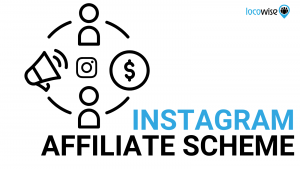What is Page Experience:
Page Experience is an SEO-specific term for a new metric being rolled out in 2021 by Google to measure the usability of a website, from a public perspective. It focuses on the user experience and how to optimize it. Major search engines are constantly updating algorithms for ranking websites based on relevance, credibility, authenticity, and usability. This aligns with Google’s fundamental mission statement: “to organize the world’s information and make it universally accessible and useful.”
Priority of Google Ranking Factors
There are hundreds of Google ranking factors, which often fluctuate as updates are added and adjusted. It’s helpful to know which ones maintain higher level priority over others:
- Backlinks
- Freshness
- Topical Authority
- Search Intent
- Content Depth
- Site speed
- HTTPS Mobile-friendliness
- User Experience
- Content Accuracy
While page or user experience has always been an important component of determining a website’s value and worth, page experience will become a new ranking factor all unto its own, and a crucial one that carries a lot of ranking weight. Google defines page experience as “a set of signals that measure how users perceive the experience of interacting with a web page beyond its pure information value.” So, if your website is creating an experience that visitors hate, the page experience ranking factor may penalize you.
Page Experience Signal Criteria
- Mobile friendliness
- Page speed insights
- Safe Browsing
- HTTPS encryption security
- Visual layout stability
- Responsiveness
- No intrusive interstitials
Core Web Vitals
Google recently launched Web Vitals, a set of metrics used specifically for measuring user experience, and announced plans to update its algorithm in 2021 with Core Web Vitals. It’ll join the group of metrics which Page Experience will be part of. This new subset of user-centered metrics will be added to existing metrics to quantify key aspects of page experience, including speed, responsiveness, and visual stability. Google’s new page experience update will also remove AMP as a requirement. AMP is a web component framework that facilitates website creation.
This new SEO metric will evaluate user experience based on the following additional criteria:
Largest Contentful Paint (LCP): Measures loading performance and speed. Ideal loading time is 2.5 seconds or less of a user landing on a page.
First Input Delay (FID): Measures interactivity of a web page. FID of 100 milliseconds or less is considered optimal.
Cumulative Layout Shift (CSL): Measures a website’s visual stability. A CLS score of less than 0.1 is the baseline for a good user experience.
All of the factors bundled together in Core Web Vitals are intended to optimize business success and user experience by deepening engagement and maximizing usability. Google continues to update its algorithm to adapt to evolving consumer behaviors and navigation trends.
3 Types of Google Algorithm Updates for SEO
- Major Updates
These are implemented on a larger scale to address specific issues, and have great impact on ranking. They occur once or a few times annually, and websites are given advanced notice before the updates take place. This allows for a window of time to get prepared, so that rankings of well-established websites don’t plummet as soon as the update goes into effect.
- Broad Core Updates
Adjustments to a main algorithm can occur a few times a year, and usually entail shifting the priority of some factors, such as quality of backlinks and loading speed.
- Minor Updates
These are slight refinements on micro-algorithms which can occur on a daily basis to improve relevance of search results and user experience.
Tracking Algorithm Updates
Fluctuations in major signals, like the page experience update, directly impact your website’s SEO performance, including traffic flow and conversion rates, so it’s important to track algorithm updates to respond and adapt appropriately. Google Search Console is a helpful tool for checking signals and vitals of your site’s SEO performance. Here are some additionally valuable resources to check for upcoming algorithm changes—especially a major update like Core Web Vitals.
SEO Blogs
Checking SEO blogs on a regular basis can keep you looped in on metrics updates.
You can follow news from top industry leaders and SEO experts to stay current on ranking updates.
SEMrush Sensor
This tool provides a deeper insight into the volatility of rankings over time. You can customize your scope of analysis based on site category, SERP, and device type to access more granular data.
Preparation for Ranking Updates
It’s difficult to know for sure how an algorithm update and new page experience metrics will impact your search engine rankings. Plus, Google tends to be tight-lipped about the specifics, to prevent competitors from trying to manipulate their system with unethical SEO tactics. The ultimate purpose of periodic updates is to incentivize websites to prioritize improving user experience and content relevance, over quantifiable measurements and rankings. There are preemptive ways to prepare your website for impending updates, even without advance warning, and to maintain the quality of your website’s page experience.
Best Preparation Practices for Algorithm Updates
Check loading speed: Site speed has a direct impact on your page experience. Research has indicated that over 50% of visitors will leave a site if it takes more than 3 seconds to load, and 80% will not return to the site. Common reasons for delayed speed that can be addressed are large visuals and unnecessary codes.
Check Landing Page and Visual Stability: Make sure that your website is running properly and is well-structured to facilitate navigation for users and crawlers. This includes checking to make sure that interactive features are glitch-free and functioning the way they should.
Optimize for mobile devices: Since many people use mobile devices to conduct online searches, your webpage should be optimized for mobile-friendly accessibility. This ensures that content loads properly and quickly, as it would on desktop devices.
Ensure browsing safety: Ensure that your website is free of malware, deceptive content, and any security issues or threats. HTTPS encryption is also essential for security.
Create and maintain quality content: On-page content should be relevant, appealing, useful, and up-to-date for your target audience to optimize page experience.
Run a Technical Audit: Aperiodic technical check-up of a website can identify bugs that are impeding your website’s content and accessibility, such as spammy backlinks, broken links, pop-ups, crawl and schema errors, and other fixable issues.
Conclusion
For any website to achieve and sustain high rankings, it’s vital to stay up to date and on-target with algorithm updates. With respect to digital and online marketing, the only thing that’s constant is change, so adaptivity and flexibility are essential to sustain business in such a volatile industry. There are many contributing factors built into ranking criteria, but ultimately, the websites that are ranked at the highest levels are ones that are approachable and user-friendly, in addition to providing relevant and current information. As the launch of Core Web Vitals approaches, and metrics for the Google Page Experience update are adjusted, strategies must adapt and evolve accordingly.
Digital & Social Articles on Business 2 Community
(37)
Report Post




